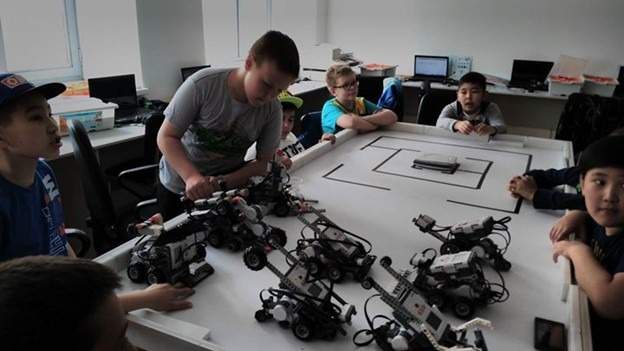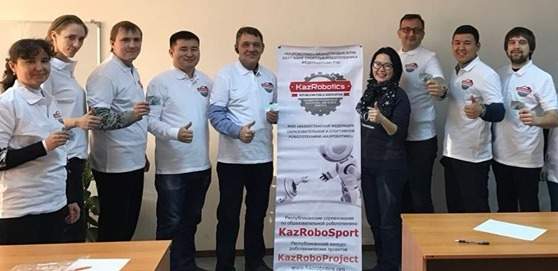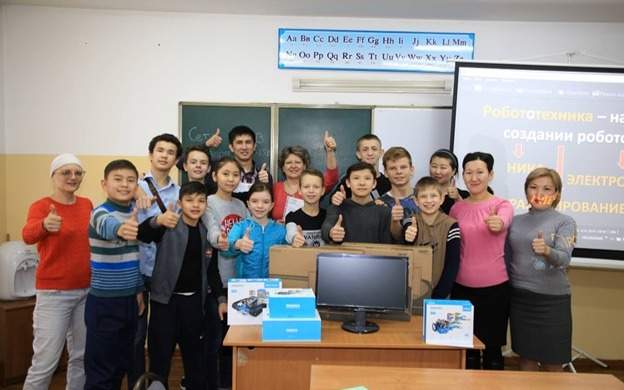Challenges, yet big promises for robotics in Kazakhstan

The Kazakhstan Federation of Educational and Sports Robotics, also known as KazRobotics, was established in 2015 and has since covered multiple areas aimed at developing robotics in the country. Among them is inclusive robotics, a new and necessary area being developed by the federation, said Aizhan Zhekeeva, head of KazRobotics, in an interview with Kazinform News Agency.
When the idea was born to establish KazRobotics in 2011, few people showed interest in the field. Facilities were left from the Soviet period and were mostly directed to radio engineering. However, it was radio technicians who sprang into action.
“In the centers of technical creativity, inherited from the Soviet Union, there were radio engineering clubs. They were the first to become interested in this new direction [referring to robotics]. But every such techie by nature spends more time in his own cubbyhole than going out to find like-minded people. Therefore, first of all, we decided to find such people in the regions who were interested in developing what the rest of the world has been passionate about for over 20 years and creating autonomous devices designed to perform various tasks,” said Zhekeeva.
The first competitions were held as part of extracurricular education. The federation received official registration from the Ministry of Justice in 2015.
“We were the first specialized association at that time, whose charter aimed to promote the development of educational and sports robotics in Kazakhstan. For us, this has been and remains the main area of activity,” she said.
The message turned into the federation’s key values to unite young people with a passion for robotics. Children come from various educational backgrounds, including public and private schools and schools for children with disabilities. Participation in the competition is free for all.

“Our mission is to be inclusive. This is not possible if we introduce participation fees for those categories of teams that do not have the budget for it. (...) We take all decisions of the federation by common vote,” said Zhekeeva.
Zhekeeva emphasized the need to include robotics in the school curriculum and take measures to prepare specialists trained to teach robotics.
“The current times require a whole set of competencies, including engineering and technical thinking, which should be mandatory for individuals, even those in administrative positions in applied fields. Roughly speaking, the mayor managing engineering communications in a metropolis should have engineering thinking, if not education. This type of thinking should be instilled from kindergarten until the age of 12. After that, the focus is on socialization, social adaptation, personality formation, and so on. We lack understanding and support at a strategic level of our country,” she said.
Interest in robotics has no age limit, and students range from 5 to 60 years old. Zhekeeva mentioned a case when a 60-year-old teacher decided to retrain and teach robotics.
The federation also works with public organizations engaged in the social adaptation of children without parental care.
Key areas of work
The federation has four directions, depending on interest, age, and program complexity: sports robotics, educational robotics, preschool robotics, and inclusive robotics.

KazRoboSport championship focuses on sports robotics with participants aged from 6 to 21.
“The KazRoboProject (educational robotics) scientific and technical creative project competition has been held since 2016, initially running parallel to the championship, but in 2018 it was given its own schedule. Participants prepare projects on any topic that corresponds to the slogan of raising the quality of life of Kazakh citizens,” she said.
“Examples of projects include creating an active-passive trainer for the rehabilitation of children with cerebral palsy, developing a working model of a device for automatic room disinfection, creating a prototype of a floating device for rescuing drowning individuals, devising devices for collecting surface water debris, devices for automatic irrigation or pest control in agricultural crops, and many others,” said the founder.
The RoboBalapan project is designed for preschoolers.
“It all started with the participation of a kindergarten from Petropavlovsk in the All-Russian competitions for preschoolers in Omsk. Their interest and success made us realize that this niche also needed to be filled. We developed an approach adapted to the conditions of Kazakhstan and held pilot competitions in December 2018,” she said.
According to Zhekeeva, Robobalapan helps children enter the school rhythm more easily, teaches more conscious learning and gives psychological contact with parents.
“Rehabilitation robotics (inclusive) represents a social adaptation of persons with special educational needs and health limitations through technical creativity. School for children with hearing problems No.1 in Almaty has become a main pilot site. The federation’s role is significant in this direction,” she said.

“One successful case is when a boy with hearing difficulties went to technical college and won a vocational skills competition. Another successful case is when a boy with cerebral palsy won the championship and competition, entered Astana IT University, and won at professional competitions. However, it is difficult for both of them to find a job now. Employers are not ready for them,” said Zhekeeva.
Challenges on the way of enthusiasts
While robotics is new for Kazakhstan, it faces certain challenges. One of them is the absence of a university specialty to train robotics teachers. As a result, robotics is taught by informatics teachers.
The issue of equipment is also acute and includes quality and software problems, when teachers do not know how to use equipment since they are not robotics engineers by profession. The value of the robotics direction is not understood by officials who mostly put emphasis on mathematics.
“Officials in their majority do not see the value that socially responsible citizens can bring to the table,” notes Zheekeva, speaking about the importance of technician skills.
She hopes that enthusiasts' efforts will not fail. An increase in the number of industrial enterprises, students’ ability to work with proper materials, and a direct link to the labor market are essential factors in the development of robotics in Kazakhstan.
“The development of the technical component of all industries, without exception, is already undeniable, starting with trade and medicine and ending with the country's defense. Manipulation of devices, their full-fledged and accident-free use, is possible only with quality personnel training. Technical skills, at least at the level of maintenance and understanding of the principle of operation, are as good a basis as PC proficiency,” said Zheekeva.
While technologies can now be found in almost every sphere of life, Zhekeeva does not think robots will replace humans “anytime soon”.
“People are needed to create, maintain, and repair all this technology. People are needed for other people. Therefore, in our work, we pay special attention to the social aspect. Even in the project competition, we give more points to projects created for specific individuals in need of assistance. Like a neighbor with a stroller, or an elderly grandmother. If even a portion of our participants implement their projects in real life, start companies, create jobs, lead design bureaus, or open repair shops, in my opinion, this is the most successful career development path,” she said.
